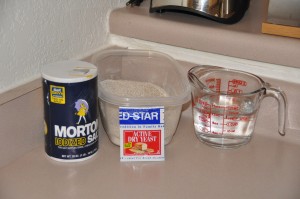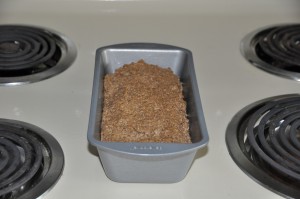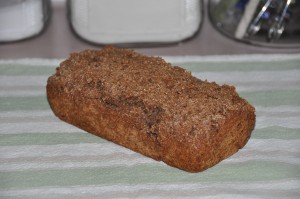“This quite unusual bread is from a very old German recipe. Originally the dough was prepared at home and put into an airtight wooden keg for 18 to 24 hours. Then it was formed into loaves and rushed to the local baker’s oven. I have worked out a version that can be done from start to finish in your own kitchen.”
-James Beard, Beard on Bread
Since I still had some rye flour left over from making Finnish Sour Rye Bread, I decided to try making Bavarian Rye Bread.
Here are the ingredients (all four of them):
On Friday night, I mixed the mixed the rye flour, yeast, salt, and water together. The resulting mixture looked like wet sand. I tried to knead it with limited success, since the dough was the consistency of mud. I gave up and placed the dough in a bowl, sealed it with plastic wrap, and then covered it with aluminum foil (an “airtight wooden keg” in my very own kitchen!) Next, I let the dough sit for 16 hours.
On Saturday afternoon, I uncovered my dough to find…a slightly larger pile of wet sand. Kneading number two went about as well as the first kneading. I dumped the dough into an 8 x 4 loaf pan and let it rise for an hour. I don’t think that it actually rose, since the sandy lump had the same texture and didn’t seem to have gotten any bigger, but I made the executive decision to bake my loaf anyway.
After 40 minutes, I pulled my loaf from the oven. It looked like a chunk of cement.
Luckily, the bread tastes much better than it looks. It has an interesting texture–very dense and grainy–and a pleasant flavor. Despite its unusual baking method and appearance, Bavarian Rye Bread was a decent loaf of rye bread.



